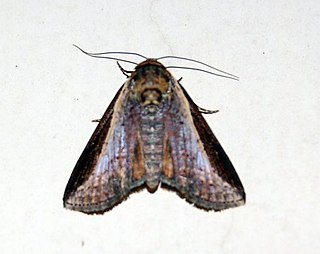
Lophoptera is a genus of moths of the family Euteliidae.
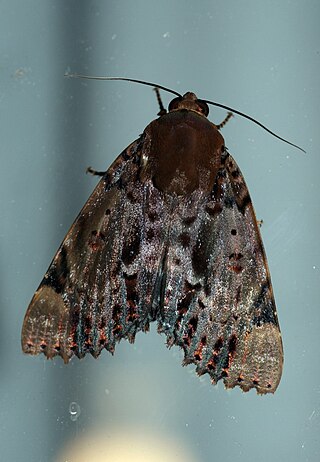
Arcte coerula, the ramie moth, is a moth of the family Noctuidae. The species was first described by Achille Guenée in 1852. It is found from in south-east Asia, including Fiji, India, Sri Lanka, Myanmar, Japan, New Guinea, Taiwan and Norfolk Island. It has been recently observed in Hawaii, on the island of Maui.
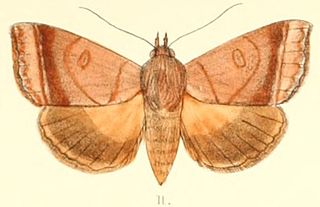
Ophiusa trapezium is a moth of the family Erebidae first described by Achille Guenée in 1852. It is found from the Indo-Australian tropics of India, Sri Lanka to Queensland, the Bismarck Islands and New Caledonia. Adults are fruit piercers.
Dysgonia rigidistria is a moth of the family Noctuidae first described by Achille Guenée in 1852. It is found on the Indian peninsula and Sri Lanka.
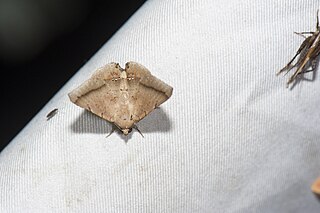
Macaldenia palumba is a moth of the family Noctuidae first described by Achille Guenée in 1852. It is found from the Oriental region of India, Sri Lanka to Japan (Okinawa) and Sundaland, east to New Guinea. It is also found on Guam in Micronesia.

Ctenoplusia limbirena, the Scar Bank gem, or silver U-tail, is a moth of the family Noctuidae. It is found in south-western Europe, Africa, the Canary Islands, Arabia, the southern Himalayas, India, Sri Lanka, Indochina to south-eastern China, Taiwan, Sulawesi, Bali and Timor. In New Zealand, it has been established since 2011.

Sympis rufibasis is a moth of the family Noctuidae first described by Achille Guenée in 1852. It is found from the Indo-Australian tropics of India, Sri Lanka, Borneo east to New Guinea, the Solomons and Queensland.
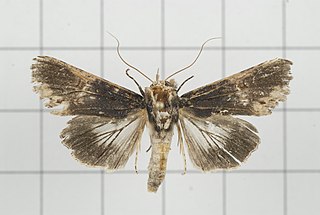
Stictoptera cucullioides is a moth of the family Euteliidae. It is found from the Indo-Australian tropics of India, Sri Lanka to the Bismarck Islands and Queensland. It is an introduced species in Hawaii, where it is found on Oahu, Molokai, Maui and Hawaii.

Calyptra minuticornis, the vampire moth, is a moth of the family Erebidae. It has been found in Indonesia, Java, India, Sri Lanka, and Australasia.

Penicillaria jocosatrix, the mango shoot borer, is a moth of the family Euteliidae first described by Achille Guenée in 1852. It is found from southeast Asia to the Pacific. Records include Borneo, Guam, Hawaii, India, Sri Lanka, Thailand and in Australia, Western Australia, the Northern Territory and Queensland.

Serrodes campana is a species of moth of the family Erebidae first described by Achille Guenée in 1852. It is found from the Indo-Australian tropics to eastern Australia, Fiji, Samoa and New Caledonia. It is also present in Japan, Korea and Sri Lanka. The adult is a fruit piercer, but also feeds on flower nectar.
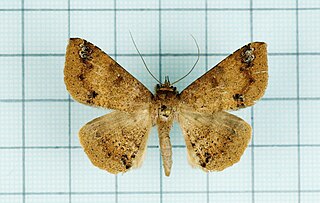
Ericeia inangulata, the sober tabby, is a moth in the family Erebidae. The species was first described by Achille Guenée in 1852. It is found in the Indo-Australian tropics of China, India, Sri Lanka, Myanmar, and the Marianas and Carolines, Fiji, Vanuatu, New Caledonia and Samoa.
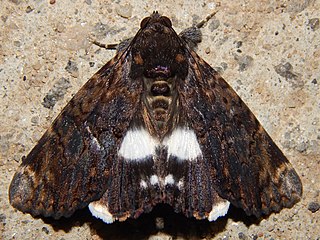
Nagia linteola is a species of moth in the family Erebidae first described by Achille Guenée in 1852. This species occurs in South Africa, the Democratic Republic of the Congo, Yemen, the Comoros, Mauritius, Madagascar, Indonesia (Borneo), India, Sri Lanka, Myanmar, Thailand and in Australia, where it has been recorded from Western Australia, the Northern Territory, Queensland and Victoria.
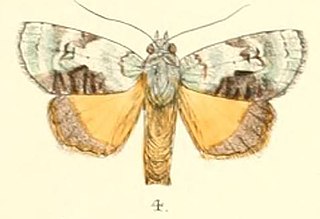
Blenina donans is a moth of the family Nolidae first described by Francis Walker in 1858. It is found from India, Sri Lanka to the Pacific region.
Sauris hirudinata is a moth of the family Geometridae. It was described by Achille Guenée in 1858. It is found in Fiji, Sri Lanka, India, Hong Kong, as well as on Peninsular Malaysia and Borneo.

Erygia apicalis is a moth of the family Erebidae first described by Achille Guenée in 1852. It is found from the Indo-Australian tropics of India, Sri Lanka to Japan, Australia and the Solomon Islands.

Erygia spissa is a moth of the family Erebidae first described by Achille Guenée in 1852. It is found from the Indian subcontinent to New Guinea, where it is found in lowland habitats, including heath forests and coastal forests.
Hypopyra unistrigata is a moth of the family Erebidae first described by Achille Guenée in 1852. It is found in China, India, Bangladesh, Sri Lanka (Trincomalee) and Cambodia.
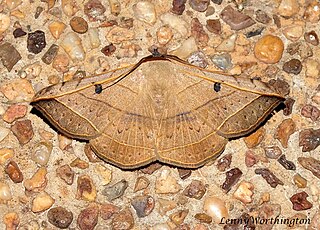
Entomogramma torsa is a moth of the family Noctuidae first described by Achille Guenée in 1852. It is found in India, Sri Lanka, and Java.

Feliniopsis indistans is a moth of the family Noctuidae first described by Achille Guenée in 1852. It is found in India, Sri Lanka, Hong Kong, Japan and Taiwan.

















